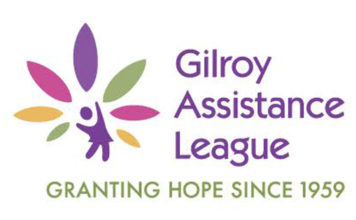Santa Clara County Sheriff Laurie Smith and her challenger in the June election, recently retired Sheriff’s Capt. Kevin Jensen, both agree the Sheriff’s Office can do more to help better rehabilitate prisoners and parolees to prevent them from continuing to commit crimes.
But that’s where the commonalities seem to end.
In Gilroy, officials attribute a double-digit increase in crime with Assembly Bill 109—the Public Safety Realignment Act. The 2011 state law shifted inmates from state prisons to county jails—and then required supervision of non-violent criminals be done by county parole officers and not state probation departments.
Gilroy Police Chief Denise Turner and City Council are concerned realignment is draining resources and is the root cause of a 19 percent spike in crime between 2011 and 2012, citing increased violent crimes, property crimes, drug-related crimes and gang activity.
The number of property crimes in Morgan Hill decreased between 2011 and 2012. But there was a steep uptick in the number of vehicle thefts and assaults in 2013 compared to previous three-year averages, MHPD Chief David Swing previously told the Morgan Hill Times.
“People who were sentenced on non-serious and non-violent felonies did their time locally instead of in state prison for the same amount of time,” Smith, who has served as sheriff since 1996, said in a phone interview. “I would be hard-pressed to be convinced that an increase in crime is because of AB 109.”
As a result of realignment, Smith says criminals are getting a higher level of supervision through the county than when state probation departments were responsible for their management.
In South County, some law enforcement agencies like the Gilroy Police Department are struggling to manage the parolee population now that the county is in charge of the criminals released through realignment.
According to GPD Capt. Kurt Svardal, Gilroy has the second highest number of parolees shifted from the state through realignment than the entire county. San Jose has the highest number, he pointed out.
“Our population is higher than cities twice our size,” Svardal said. “The rest of the county seems to be having success (dealing with this population) but South County seems to be struggling when it comes to probation, but I think they’ve been doing well with what they have.”
The GPD’s Anti-Crime Team, tasked with gang-suppression and proactive policing, helps keep tabs on some of the more serious offenders—and many of them are parolees officially under county supervision.
“It’s a balancing act,” Svardal said.
Jensen, a 28-year-veteran of the Sheriff’s Office, doesn’t mince words when he says realignment has taken its toll on county and local resources.
“I believe that the counties bore the unnecessary brunt of realignment; it really was a state problem,” Jensen said during a phone interview. “The state is sending people to our jails when our jails are not built for long-term prisoners.”
The criminals out on probation are committing more crimes and street-level officers with local police departments across Santa Clara County are left to deal with them without much additional funding from the state, according to Gilroy police.
“If you ask any police chief they’ll say the property crimes are getting worse,” Jensen said. “We share the problem with city chiefs, and I would sit down with them in a truly collaborative way.”
Both Smith and Jensen agreed that the Sheriff’s Office needs to better improve rehabilitation efforts for rehabilitate high-risk offenders and steer at-risk youth away from a life of crime.
Smith highlights a new program-housed in San Jose-designed as a “one-stop shop” for parolee services offering everything from substance abuse and mental health counseling to help finding housing. The facility, staff and programs are funded by a $2.5 million grant from the California Department of Corrections and Rehabilitation.
“The state has a recidivism rate of 70 percent,” Smith said. “The majority are going to continue to commit crimes, but we can get that 70 percent lower through a lot of the positive programs we’re doing.”
She remains confident that the county can do a better job at supervising parolees than the state, citing the excellent work her performed by the Sheriff’s Office-comprised of roughly 1,800 sworn and non-sworn personnel.
“Can we do a better job than we have in prior years? I think so,” Smith said.
Wraparound services are critical in rehabilitating prisoners and parolees to prevent recidivism, Jensen agrees.
But in order to do that, Jensen says the Sheriff’s Office needs to implement an improved intake questionnaire to help direct the proper services to inmates when they’re processed in county jail. Questions like “are you a veteran?” aren’t currently part of intake protocol, he added.
“We’re missing some of that key information to see what services are needed,” Jensen said. “We’re doing half the job. How are we ever going to know what works if we never question them when they first get in there?”
-Candidates for Santa Clara County Sheriff will require more than 50 percent of the vote to win the office.
-If no candidate receives more than 50 percent, a runoff between the top two vote-getters will take place in November.
-Other County races on the June 2014 are the office of County Supervisor District 1 (South County), District Attorney and Tax Assessor
-The election will also feature the primary races for statewide and congressional races.















